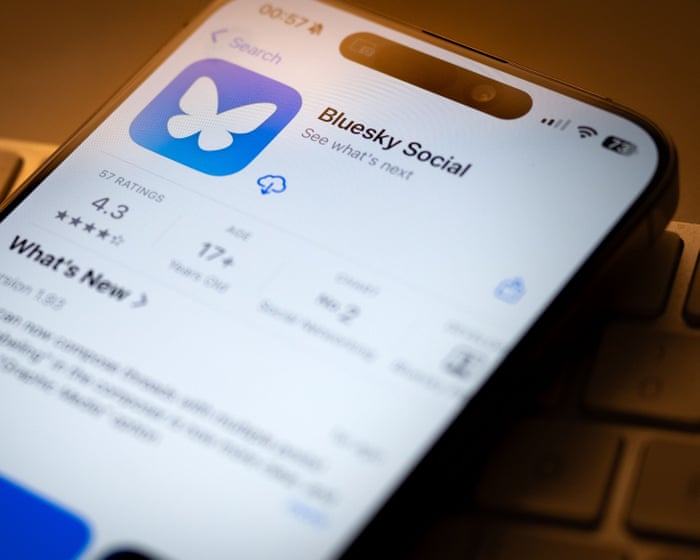Bluesky is increasingly becoming the go-to social media platform for scientists worldwide, with new analysis showing that research shared there gets more engagement and thoughtful discussion than on Elon Musk’s X.
A study of 2.6 million Bluesky posts referencing over 500,000 academic articles from the past two and a half years found “substantially higher levels of interaction”—including likes, reposts, replies, and quotes—as well as greater “textual originality” compared to what has been reported for X (formerly Twitter).
This comes as the young platform faces reports of declining active users and activity in recent months. Bluesky saw a surge in new users after Musk’s takeover of X and Donald Trump’s return to the political scene.
Still, the scientific community has embraced Bluesky. In August, daily science-related posts doubled compared to July and were more than triple the number from March, though the platform hasn’t shared exact figures.
The key to Bluesky’s appeal among scientists seems to be deeper engagement. A team led by the UK’s Sheffield University found that nearly half of scientific posts on Bluesky received at least 10 likes, and a third were reposted 10 or more times. On X, previous research showed those numbers were much lower—only up to 4.4% of posts got 10 or more reposts.
Quotes and replies to scientific work were also higher on Bluesky. Only 6.3% of posts simply mentioned an article’s title and journal, suggesting more meaningful interaction. The study has not yet been peer-reviewed.
Er-Te Zheng, one of the study’s authors, said: “After a sharp rise in late 2024, scholarly discussion on Bluesky has stayed consistently high—reaching levels similar to or even exceeding X. Our research shows that scientific posts on Bluesky are not only more original but also get stronger engagement, making it a credible platform for science communication. What stands out to me is how ‘pure’ the scientific discussion feels—my feed is almost entirely researchers and journals, unlike the mixed content on X.”
Bluesky has grown quickly since its 2023 launch, partly driven by major political events. It now has over 38 million users, though daily active users, likes, and posts have declined since peaking in late 2024.
The platform’s strong science community is no accident—leading science communicators have worked to build a sustainable space there.
Tara C Smith, an epidemiology professor at Kent State University, said: “I was very active on science Twitter for 15 years, but engagement dropped dramatically and trolls and bots increased. It became useless, even with 130,000 followers. On Bluesky, though smaller, I can have good discussions with people in my field. It works like SciTwitter for keeping up with research but is much better for conversation.”
David Shiffman, a marine conservation biologist and early adopter of social media for science, moved to Bluesky due to concerns about conspiracy theories on X. “Bluesky isn’t better than Twitter was in its prime, but it’s a lot better than Twitter is now,” he said.
Andrew Thaler, a deep-sea biologist with 38,000 Bluesky followers, added: “The community doesn’t care about the platform—they care about where the people are. It was important to make sure people moved over so the community could keep thriving. Science on Bluesky is kind of the place to be now.”The best part of Bluesky is that a smaller social network isn’t necessarily a bad thing. The engagement is incredible.
Frequently Asked Questions
Of course Here is a list of FAQs about the finding that science research gets more engagement on Bluesky than on X
General Beginner Questions
Q What is this finding about
A A recent study discovered that posts about new scientific research tend to get more likes replies and shares on the social platform Bluesky compared to X
Q What are Bluesky and X
A Both are social media platforms where users post short messages X is one of the largest Bluesky is a newer similar platform created by one of Twitters original founders
Q Why does this matter
A It matters because scientists share their work on these platforms to reach the public other researchers and policymakers More engagement means their important findings are being seen and discussed by more people
Q Is Bluesky bigger than X now
A No not at all X has hundreds of millions of users Bluesky is much smaller but is growing The study suggests that even with fewer people the Bluesky community is more actively interested in science content
Deeper Dive Why Questions
Q Why would science get more engagement on Bluesky
A Researchers think its because Blueskys early user base included many academics journalists and tech enthusiasts who are naturally interested in science The platforms culture may also have less noise and misinformation compared to the larger more general audience on X
Q What kind of engagement are we talking about
A The study looked at measurable interactions like the number of likes reposts and replies a sciencerelated post receives
Q Does this mean X is bad for scientists
A Not necessarily X still has a massive audience and is a powerful tool However this study suggests scientists might get more meaningful focused conversations and visibility for their work on Bluesky
Q Couldnt this just be because Bluesky is new and trendy
A Thats a great point and it could be a factor The newness might attract curious early adopters The study will need to be repeated over time to see if the high engagement is a lasting trend or just a temporary phase
Practical Questions




